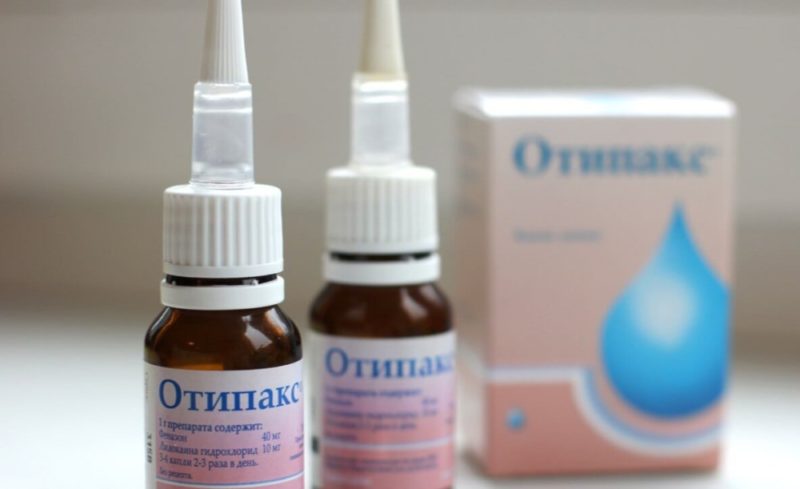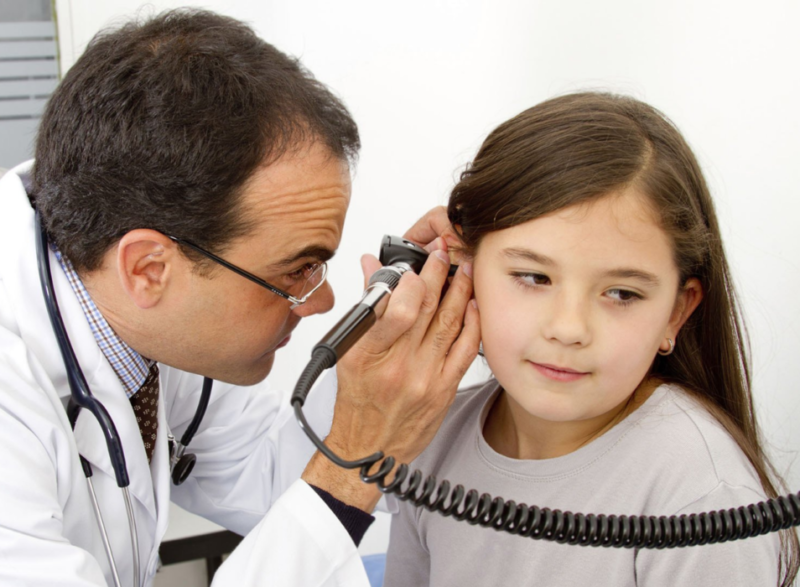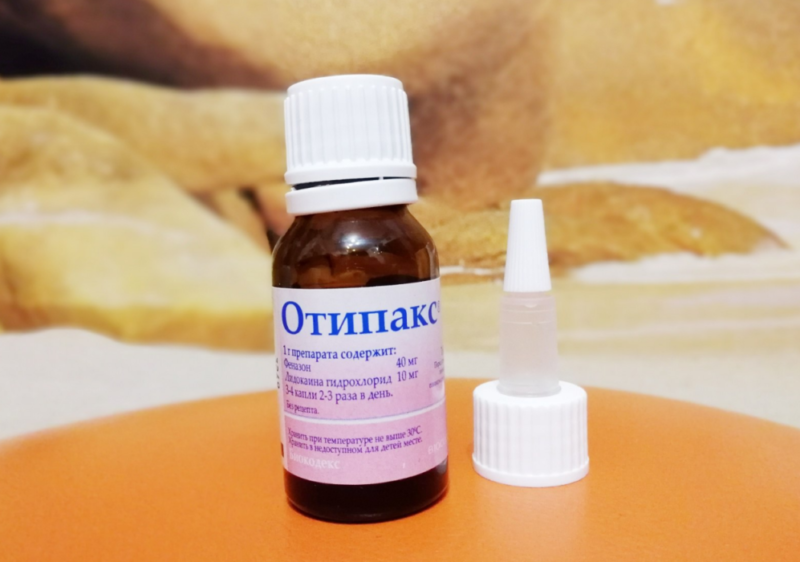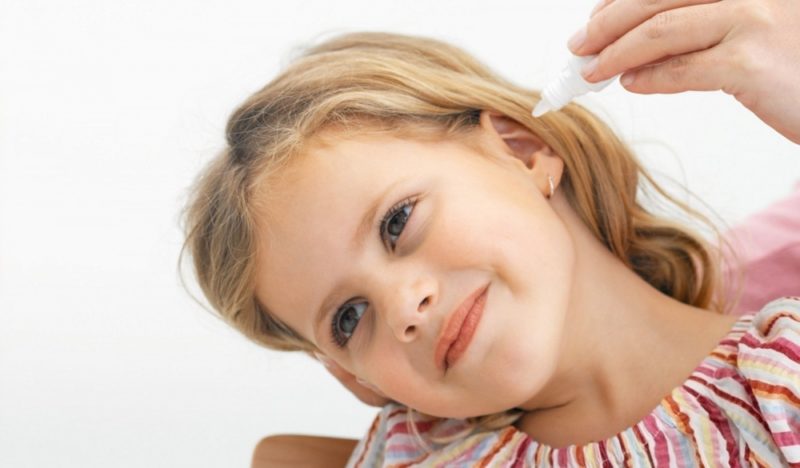Diseases of the ENT organs are an extremely unpleasant phenomenon, which is often accompanied by hearing impairment, loss of smell, or inflammatory process. When choosing medications, experts recommend paying attention to such parameters as safety, tolerability and effectiveness. Before starting therapy, you should carefully read the instructions for children for Otipax.
Material Content:
The composition of the drug
The anti-inflammatory antiseptic contains several major active compounds:
- lidocaine is a common substance that has analgesic properties and is often used in medical practice;
- phenazone is another component that is characterized by analgesic effects, and also has anti-inflammatory activity. In addition, phenazone acts as an antipyretic, the main task of which is to lower high body temperature.
Also, the drug contains a small amount of additional compounds: sodium thiosulfate, ethanol, glycerol and purified water.
In what cases is Otipax prescribed
The main purpose of this medication is the therapeutic treatment of ear pain, which occurs as a result of various inflammatory diseases.
A specialist can prescribe this drug for the following pathologies:
- Otitis media (medication is in great demand during the acute stage of diseases, when the patient has severe pain discomfort).
- Otitis media as a result of complications after sinusitis, tonsillitis, rhinitis or influenza.
- Otitis due to trauma (infection of an open wound).
- External or diffuse otitis media.
- Abscess.
- Barotraumatic edema.
Otipax has quite strong anesthetic properties, however, the antibiotic or antiviral components are absent in the component composition of the drug. In diseases that were caused by microbes, the medication is able to provide exclusively symptomatic treatment, but not eliminate the provocateur of inflammation. The main task of the combined drug is to relieve pain and reduce the severity of the inflammatory process. In this regard, patients need to consult a specialist who will select a comprehensive therapy.
Age restrictions on admission
Symptomatic therapy with Otipax for inflammatory diseases is allowed even in children who have not yet reached the age of two. However, in this case, a consultation with the attending physician and careful monitoring of the condition of the child will be required to eliminate the risk of developing allergic manifestations. The newborn treatment regimen is determined strictly individually.
Instructions for use and dosage of ear drops for children
As a rule, the therapeutic course of treatment is at least one week. Adults are recommended to use drops no more than three times a day. The maximum dosage is four drops. Children from six years of age and adolescents are shown to drip Otipax two drops up to three times a day. Newborns will need a dosage adjustment and supervision by a doctor. Since the therapeutic agent must be stored in the refrigerator, it is recommended to warm it to room temperature before use.
The use of a medication is recommended according to the following instructions:
- Perform hand disinfection.
- Using a soft cotton swab, gently clean the auricle.
- Heat the drug to normal temperature (it will be enough to warm the bottle in your hands for several minutes).
- Make sure that the integrity of the dropper is not broken (no chips and cracks).
- Carefully pull the ear back and up so that the ear canal opens better. Then the medicine should be introduced into the affected area.
- After the procedure, it is recommended to cover the ear with a sterile cotton wool, which was previously moistened with petroleum jelly.
Patients who are professionally involved in sports are advised to choose a different therapeutic agent, as Otipax can give positive results on doping control.
Drug interaction
According to the official instructions for use, this medication is allowed to be combined with other therapeutic agents, including antibacterial drugs. However, people who are professionally involved in sports should take into account some features of the active component composition. Phenazone has the ability to influence doping control indicators and give a positive result. Patients suffering from perforation of the eardrum are not recommended to combine these drops with drugs that contain chloramphenicol.
Contraindications, side effects and overdose
According to the instructions for use, there are a number of restrictions under which the use of ear drops for otitis media is not allowed.
The following list of contraindications refers to absolute prohibitions:
- individual intolerance to a certain component from the composition (as a rule, this is an allergic reaction caused by lidocaine);
- damage to the eardrum of an infectious nature or resulting from an injury;
- periods of pregnancy and lactation.
Before starting treatment therapy, make sure the integrity of the eardrum. Otherwise, the use of the drug can cause negative consequences.Also, the risk of developing negative manifestations, which can be provoked mainly by an allergic reaction to the active component composition, is not excluded.
Possible side effects include the following symptoms: flushing, irritation of the ear canal, urticaria, severe itching, redness near the ear canal or inside, irritation of the skin, temporary deafness. If at least one adverse event occurs, the patient must stop treatment with ear drops, in more severe cases, seek medical help.
Otipax drops are practically not absorbed into the blood, since the medication has a local effect. However, if used improperly or significantly exceeds the recommended dosage, overdose symptoms may occur. In patients, an increase in unwanted manifestations is noted. In this case, the withdrawal of the drug will be required.
Analogues of the combined drug
To date, there are no direct systemic analogues of Otipax that would be fully consistent with the active component composition. However, a number of foreign pharmaceutical campaigns produce generics that almost completely coincide in pharmacological properties and effects.
Substitute drugs include the following medications:
- Polydex.
- Otiralex.
- Otinum.
- Folicap.
- Tsiprofarm.
- Biseptolum.
- Cetraxal.
- Levomethyl.
- Folicap.
- Lidocaine + Phenazone.
It is recommended to discuss the issue of replacing the prescribed medicinal drug with the attending physician, since these analogues have a number of restrictions for use.

















